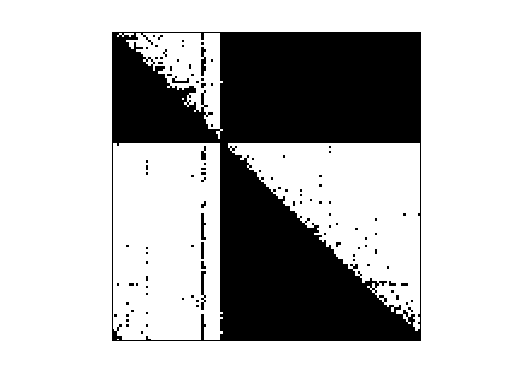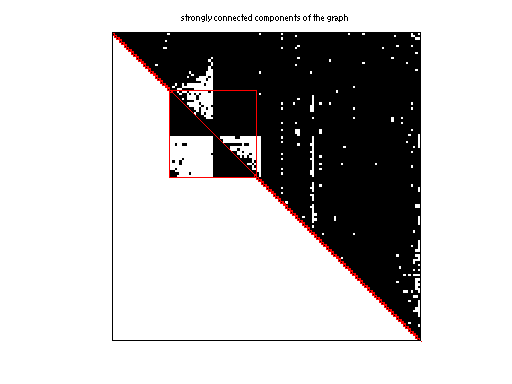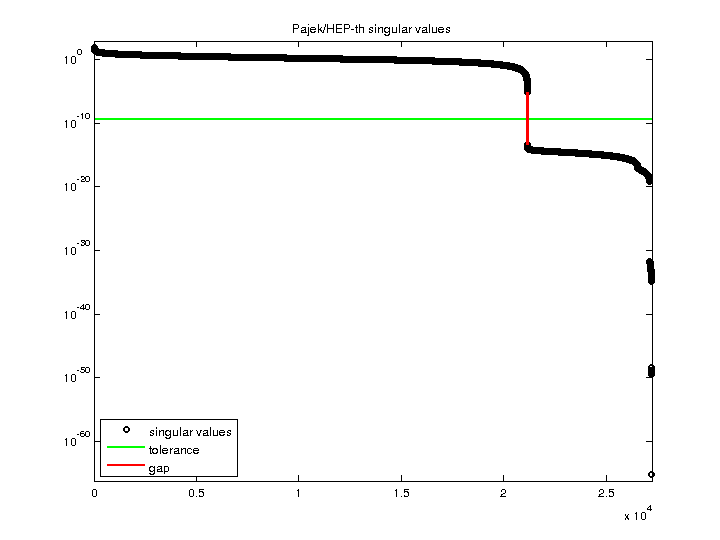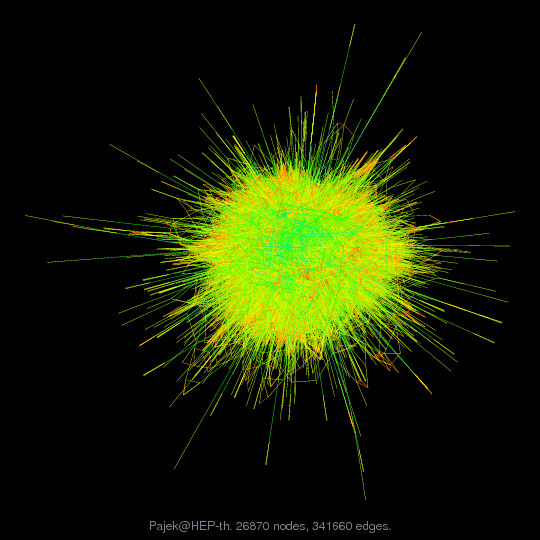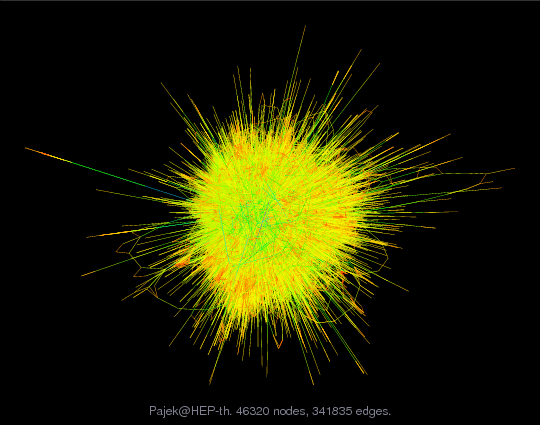Pajek/HEP-th
Pajek network: High Energy Physics literature
| Name |
HEP-th |
| Group |
Pajek |
| Matrix ID |
1502 |
|
Num Rows
|
27,240 |
|
Num Cols
|
27,240 |
|
Nonzeros
|
342,437 |
|
Pattern Entries
|
342,437 |
|
Kind
|
Directed Graph |
|
Symmetric
|
No |
|
Date
|
2003 |
|
Author
|
KDD Cup 2003 |
|
Editor
|
V. Batagelj |
| Structural Rank |
|
| Structural Rank Full |
|
|
Num Dmperm Blocks
|
|
|
Strongly Connect Components
|
19,565 |
|
Num Explicit Zeros
|
0 |
|
Pattern Symmetry
|
0.3% |
|
Numeric Symmetry
|
0.3% |
|
Cholesky Candidate
|
no |
|
Positive Definite
|
no |
|
Type
|
binary |
| SVD Statistics |
| Matrix Norm |
8.432346e+01 |
| Minimum Singular Value |
5.596091e-66 |
| Condition Number |
1.506828e+67
|
| Rank |
21,162 |
| sprank(A)-rank(A) |
|
| Null Space Dimension |
6,078 |
| Full Numerical Rank? |
no |
| Download Singular Values |
MATLAB
|
| Download |
MATLAB
Rutherford Boeing
Matrix Market
|
| Notes |
------------------------------------------------------------------------------
Pajek network converted to sparse adjacency matrix for inclusion in UF sparse
matrix collection, Tim Davis. For Pajek datasets, See V. Batagelj & A. Mrvar,
http://vlado.fmf.uni-lj.si/pub/networks/data/.
------------------------------------------------------------------------------
High Energy Particle Physics (HEP) literature
---------------------------------------------
Citation data from KDD Cup 2003, a knowledge discovery and data mining
competition held in conjunction with the Ninth Annual ACM SIGKDD Conference.
http://www.cs.cornell.edu/projects/kddcup/index.html
The Stanford Linear Accelerator Center SPIRES-HEP database has been
comprehensively cataloguing the High Energy Particle Physics (HEP) literature
online since 1974, and indexes more than 500,000 high-energy physics related
articles including their full citation tree.
The network contains a citation graph of the hep-th portion of the arXiv.
The units names are the arXiv IDs of papers; the relation is X cites Y .
Note that revised papers may have updated citations. As such, citations may
refer to future papers, i.e. a paper may cite another paper that was publishe
after the first paper.
Update May 12, 2003 is not included.
transformed in Pajek format: V. Batagelj, 26. July 2003
-----
|
